Simplifying ESG Disclosure for Better Impact
 Share
Share
 Copy Url
Copy Url

ESG disclosure may not be a buzzword anymore, it’s a business essential. Whether you're running a mid-sized company or heading a global firm, ESG disclosure plays a growing role in how you're seen by investors, regulators, and stakeholders alike.
At its core, it’s about communicating your environmental, social, and governance performance clearly and consistently. But as ESG-related disclosure gains momentum, so do the expectations. Today, businesses must meet evolving ESG reporting requirements, stay aligned with recognized reporting standards like GRI, SASB, or TCFD, and avoid risks like greenwashing. Add to that the pressure from regulatory bodies, stock exchanges, and the investment community, and it’s easy to see why many teams feel overwhelmed.
But here’s the good news: good disclosure isn’t about ticking boxes. When done well, it improves transparency, helps manage climate-related risks, boosts accountability, and enhances financial performance. It also gives asset managers and third-party analysts the robust ESG data they need to make informed investment decisions.
We’ll cover the key components, frameworks, and best practices, and show how smart design can make even the most complex ESG issues more accessible. Because when you share your sustainability goals with clarity and purpose, it’s not just about meeting compliance, it's about building trust that lasts.
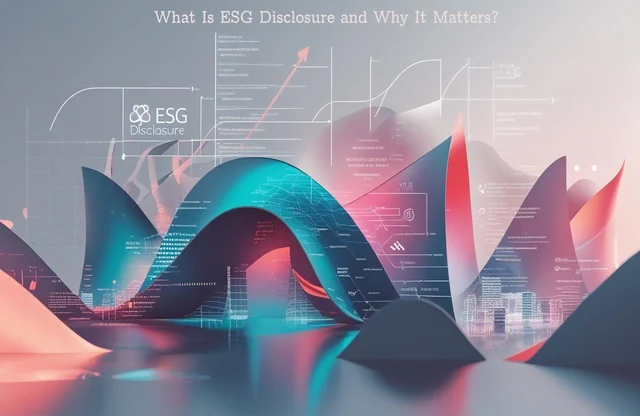
What Is ESG Disclosure and Why It Matters?
A short note to get started: ESG disclosure is how companies share their work on environmental, social, and governance fronts. Now, let’s unpack what that means and why it matters.
What ESG Disclosure Is
The term ESG disclosure refers to how a company shares data and metrics tied to environmental, social, and governance factors. It’s about helping people see how well a business handles issues like pollution, fair treatment of people, and ethics in management.
Why It Matters
This kind of reporting isn't optional anymore. Today, investors, regulators, and other stakeholders expect companies to open up. Rules like SEBI’s BRSR in India make disclosure requirements mandatory. Around the world, more businesses now share their sustainability data and metrics. It builds transparency and cuts the chance of greenwashing.
Growing Global and Indian Interest
India is stepping up fast. SEBI now expects top companies to report on ESG across their value chains. Globally, cities and nations push for clearer climate disclosure, sustainability, and corporate governance data.
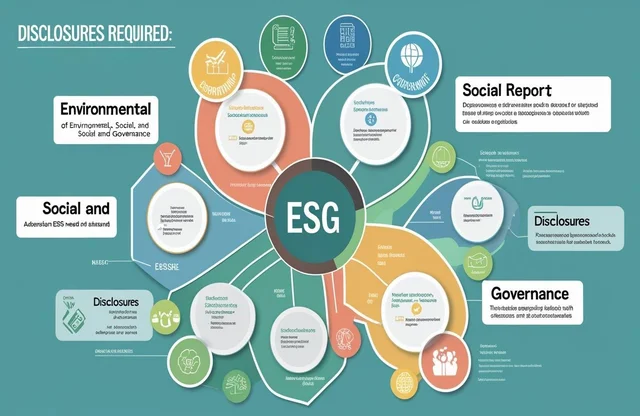
What Are the Disclosures Required in ESG Reporting?
Reporting on ESG - short for Environmental, Social, and Governance, helps businesses share how they affect the world. ESG disclosure shows what matters most in each area. It builds trust. It meets rising expectations from investors, regulators, and the broader stakeholder group. Now, let’s see what should go into each section.
Environmental Matters
Businesses need to share data on air pollution, greenhouse gas emissions, energy use, and water management. They may also note efforts to reduce waste. That kind of metric helps investors and regulators see how robust your environmental practices are. It shows your commitment to tackling climate risk and supporting sustainability goals.
Social Matters
Here, companies talk about their people and communities. They may mention employee welfare, safety, and health stats. Diversity and inclusion also matter. These disclosures help the investment community understand how a company supports its community and workforce.
Governance Matters
Good governance means fair rules, honest leadership, and oversight. Reports often include board structure, ethics, compliance, executive pay, and anti‑corruption steps. This sheds light on management quality. It helps investors and stakeholders trust your leadership.
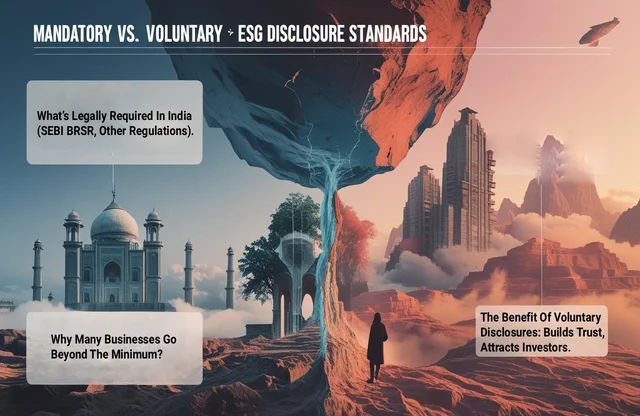
Mandatory vs. Voluntary ESG Disclosure Standards
Laws and global frameworks shape how businesses share their sustainability story. This mix of rules and choices can get confusing. Let’s walk through it, one simple idea at a time.
Mandatory Rules in India
In India, ESG disclosure is now a must for the top 1,000 listed firms, thanks to SEBI’s BRSR framework. It replaced the earlier BRR rules and brings in structured disclosures for environmental, social, and governance factors, all packaged with annual reports. From 2024–25, BRSR Core became compulsory, setting consistent expectations across ESG, including carbon emissions and energy and water use. The value chain disclosures (covering suppliers or customers that make up 2% of business) are now voluntary until the 2026 financial year.
Global ESG Standards to Know
Around the world, companies often use frameworks like GRI, SASB, TCFD, CDP, and ISSB to shape their reporting. GRI focuses on broad sustainability impacts. SASB zooms in on what matters for industry financial risks. TCFD centers on climate-related financial risks. CDP tracks environmental impacts. And ISSB, under the IFRS umbrella, aims to bring these together for investors.
Why Many Go Beyond the Minimum
A lot of companies don’t stop at meeting required rules. They add voluntary disclosures to share more on climate-related themes, sustainability goals, or governance strength. This deeper approach helps them shine brighter.
Benefits of Voluntary Disclosure
When companies share more than what's required, it builds trust. It also helps them stand out. Voluntary transparency attracts investors and strengthens credibility. It shows they care about robust ESG performance, not just compliance.

Challenges Businesses Face with ESG Disclosure
Every business wants to show progress on sustainability, but the path is rarely smooth. ESG disclosure often comes with hidden hurdles, making compliance and transparency harder than it looks. Let’s explore some of the common roadblocks companies face before we dive into solutions.
Data Gaps and Broken Systems
Many businesses struggle because they lack robust data systems. Without clear ESG data, it’s difficult to track greenhouse gas emissions, water usage, or social and governance indicators. This leads to weak metrics, gaps in reporting, and risks associated with inaccurate disclosure requirements.
Framework Confusion and Comparability Issues
With so many reporting frameworks such as GRI, SASB, TCFD, CSRD, and more, companies find it tough to align. Each standard demands different disclosure requirements, which hurts comparability across industries. Investors and regulatory bodies look for consistency. Without a universal reporting standard, accountability often feels out of reach.
Materiality and Relevance Dilemmas
Another sticking point is deciding what counts as material. Some stakeholders want deeper insight into climate-related risks, while others push for more on social and governance issues. Balancing these expectations while meeting sustainability targets leaves businesses unsure of what to focus on. The result is uneven qualitative disclosures and mixed messages.
Time-Consuming Formatting and Documentation
Even when data is available, turning it into high-quality reports is exhausting. Teams spend weeks creating visuals, aligning narratives, and ensuring compliance with evolving ESG disclosure requirements. Without dedicated design or reporting expertise, the process drains resources and delays delivery.
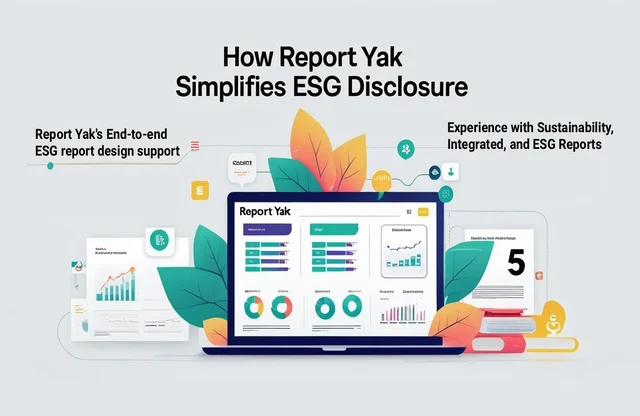
How Report Yak Helps Simplify ESG Disclosure
For many businesses, ESG reporting feels like a heavy lift. That’s where Report Yak steps in. Complex frameworks, tricky metrics, and design challenges are turned into clear and credible reports. With the right blend of expertise and creativity, the process becomes easier. It also feels lighter and far less stressful for businesses managing ESG disclosure.
Report Yak provides end-to-end ESG report design support, from structure to delivery. Raw ESG data is transformed into a clear narrative. It balances risks and opportunities without losing focus. Instead of long and overwhelming spreadsheets, the final output delivers a robust ESG story. Investors, regulators, and stakeholders can read it with ease and trust the transparency it provides.
Reports are built in line with global frameworks like GRI, SASB, and CDP. This ensures alignment with recognized reporting standards. As a result, reports meet disclosure requirements while also resonating with the wider investment community. With proven expertise in sustainability, integrated, and ESG reports, Report Yak delivers consistency and credibility in every project.
Design is at the heart of every report. Data-rich yet easy-to-read formats enhance transparency while making complex ESG issues accessible. Whether the focus is on climate-related risks, governance disclosures, or sustainability goals, visuals and layout keep the content engaging.
Future-ready formats work across print and digital, giving businesses flexibility and reach. The process also reduces pressure on internal teams. With Report Yak managing compliance, formatting, and narrative design, businesses save valuable time. The process cuts stress and brings stronger accountability. Strategic priorities remain in focus, while reporting tasks get handled with ease.
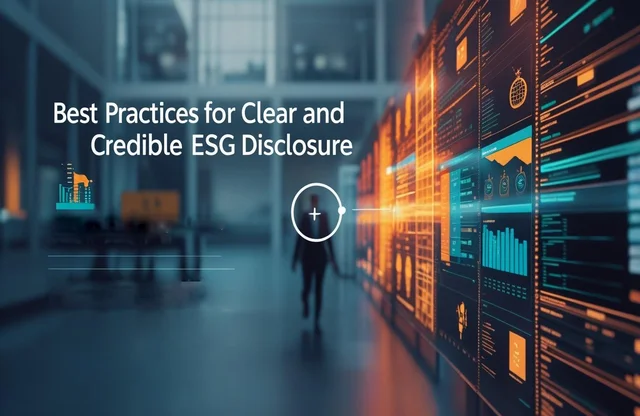
Best Practices for Clear and Credible ESG Disclosure
Good reporting should feel easy to read and easy to trust. This section offers simple tips you can use right away. We keep the focus on clarity, transparency, and the needs of your audience. Think of it as a friendly guide to make ESG disclosure stronger, more consistent, and more useful for stakeholders and investors alike.
1. Be Transparent, Even If It’s Imperfect
Share progress and gaps side by side. Explain methods, limits, and any changes to metrics. Use clear qualitative disclosures next to numbers to support transparency and accountability. These practices align with GRI principles such as balance, accuracy, and clarity.
2. Use Visuals to Simplify Complex Data
Turn dense tables into charts, infographics, and icons. Keep labels plain so readers grasp climate-related and governance metrics at a glance. Clean design improves comprehension and reduces fatigue, helping stakeholders compare results faster across periods.
3. Choose the Right Reporting Framework
Pick a reporting standard that fits your goals. GRI focuses on impacts; SASB is industry-based and financially material; TCFD centers on climate; ISSB (IFRS S1/S2) sets a global baseline for risks and opportunities. Alignment improves comparability and meets regulatory and investor expectations.
4. Tailor Disclosure to Your Stakeholders
Boards want strategy and governance signals. Investors look for decision-useful risk and performance insights. Regulators need consistent, comparable information. Map content to each stakeholder so the same report answers different needs without noise.
5. Focus on What’s Material
Report what matters to your business and its impacts. Focus on risks and opportunities with clear metrics and concise narratives. Use materiality guidance to avoid clutter and strengthen decision-useful information.
6. Keep Moving Forward
ESG reporting isn’t a one-time task, it’s an ongoing journey. Start early so data scales across years and supports compliance and comparability. Partnering with specialists like Report Yak brings good design, consistent application of frameworks, and reliable year-on-year quality.

Simplify ESG Disclosure And Boost Credibility With Report Yak
Clear and credible reporting is now central to building trust. Strong ESG disclosure goes beyond compliance. It builds confidence among stakeholders, investors, and regulatory bodies. When businesses share accurate ESG data, they strengthen accountability across environmental, social, and governance aspects. At the same time, they meet growing ESG reporting requirements with greater clarity and trust.
As global reporting standards like GRI, SASB, and TCFD continue to evolve, expectations rise. When done well, disclosures highlight risks and opportunities clearly. They show progress on sustainability goals and present robust ESG performance that the investment community can trust. Strong transparency in these disclosures also supports better financial performance. It attracts long-term capital and lowers risks associated with weak accountability.
At Report Yak, this process is made simple. Our expertise covers Annual, Integrated, Sustainability, and ESG reports. Each report aligns with disclosure requirements, improves comparability, and turns complex narratives into easy-to-read designs. Explore our Showcase page to see examples of past work, or visit our Services page to learn how we support businesses across industries.
The next reporting cycle will be here sooner than you think. Why wait until deadlines loom? Start early, and let Report Yak guide you. Call 1800 121 5955 (India), WhatsApp, or email contact@reportyak.com today. Prefer online? Fill in our Contact Form on the website, and we’ll reach out promptly! With Report Yak, your next report won’t just tick boxes, it will build trust and lasting impact.
Related Posts
-
Integrated Reporting Made Easy For Modern Companies
annual reportAnnual Report design
+6
Dec 31, 2025Share
Copy Url
How To Adopt BRSR Guidelines For Success
Oct 15, 2025Share
Copy Url
GRI Sustainability Taxonomy: Learn How to Turn Data Into Advantage
corporate governancecorporate reporting
+11
Jul 1, 2025Share
Copy Url


